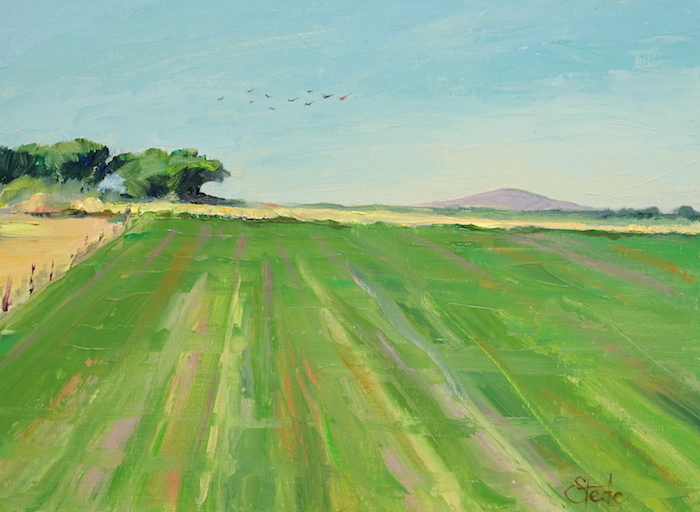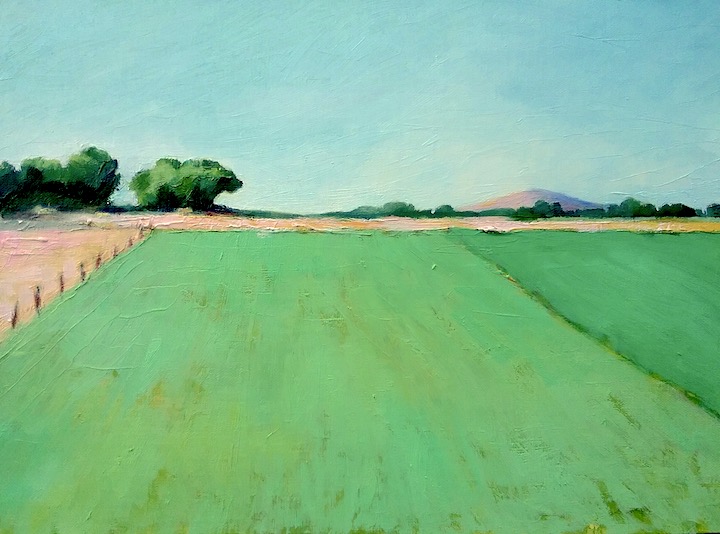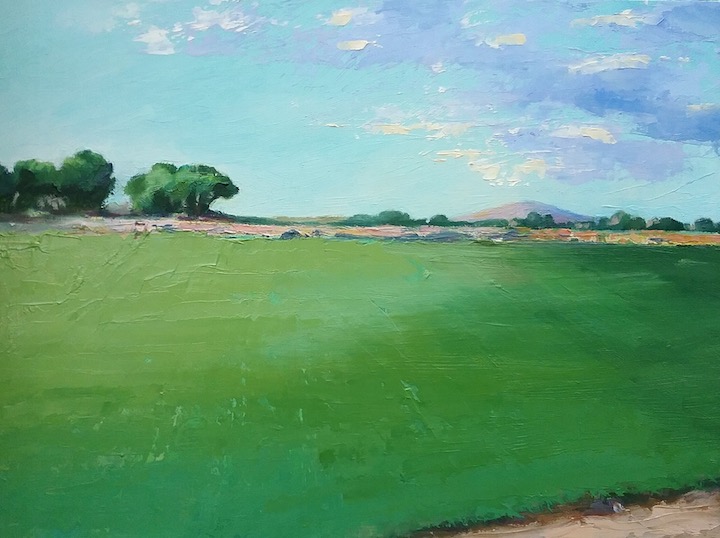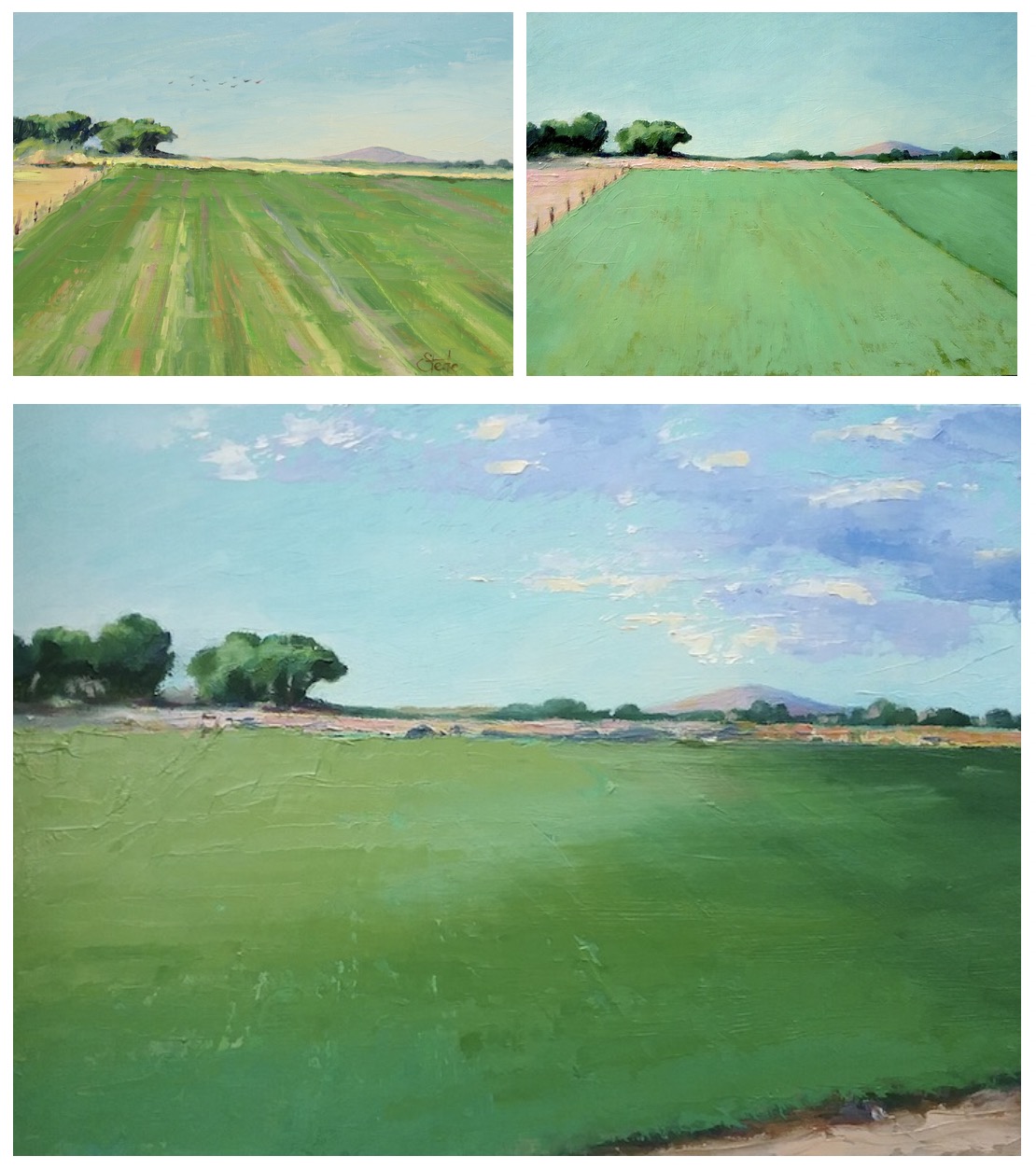Have you ever wondered how a painting comes into being? We asked guest blogger and life-long artist Stede Barber to tell us about her painting process. Here she outlines three iterations — from beginning to completion — of a recent landscape painting, titled High Summer.
When I was a young girl, I did my first plein air oil painting. I had received the gift of a little oil paint set, and decided I would walk down the sandy road to paint the Pemaquid lighthouse. Somehow, I thought that a finished painting would flow right off my paintbrush onto the canvas! (I was only 8…) Now I know that there are a lot of steps that lead to a finished painting.

ONE: This is a “start,” a plein air (painted outdoors) sketch. I am beginning to get to know this place, colors, sounds, and feel.
The fields are lush, coolness is lingering in soft breezes, crops are so green you can almost hear them growing. I’m there early, at the sparkling beginning of a fresh new day. Taking in my first impressions is like getting to know a new friend; it takes time to listen and connect. I will return several more times.

TWO: Sipping something warm from my thermos in brisk dawn air, I contemplate these rich green fields. We are in the lush ribbon of land along the Rio Grande, winding through a sand and clay-colored landscape.
After taking in the sun’s new light, hearing birds sing and flit about, and feeling cool morning breezes as they ruffle the grass, I am ready to continue painting. A deep essence is beginning to show up. Nature is alive, and beginning to flow onto the canvas.

High Summer, 2020, Stede Barber. 9″ x 12″ Oil on Linen
THREE: Like a child growing up, a painting evolves through stages to fulfill its potential.
At last, the painting holds the early morning hush and deep peace in these lush green fields… in the midst of all else, nature holds the promise of a fresh new day.
Yes, the first two paintings are under the final piece, so it is layered with story and richness.
When we asked Stede how she decided on each change, like moving away from the receding diagonals, or omitting the birds in flight, she said:
“I didn’t decide to do it. I was immersed in what I was feeling about this time and place, focusing on my composition as well as colors.
“Sometimes you have to paint over something that you love — a beautiful color, passage, image — in order for the painting to continue to unfold. And making these choices…“analysing” a painting or what is next…includes a logic beyond words…it’s as though all the learning of composition, color, and brushwork builds an intuitive way of working…or a better description might be that there is a very close conversation going on between logic and intuition.”
Click here to learn more about Stede Barber, the artist and her work.
Art Things Considered is an art and travel blog for art geeks, brought to you by ArtGeek.art — the search engine that makes it easy to discover almost 1500 art museums, historic houses & artist studios, and sculpture & botanical gardens across the US. Just enter the name of a city or state to see a complete catalog of museums in the area. All in one place: descriptions, locations and links.

Very interesting story. You walked me through your process in an engaging way.
Love your work.